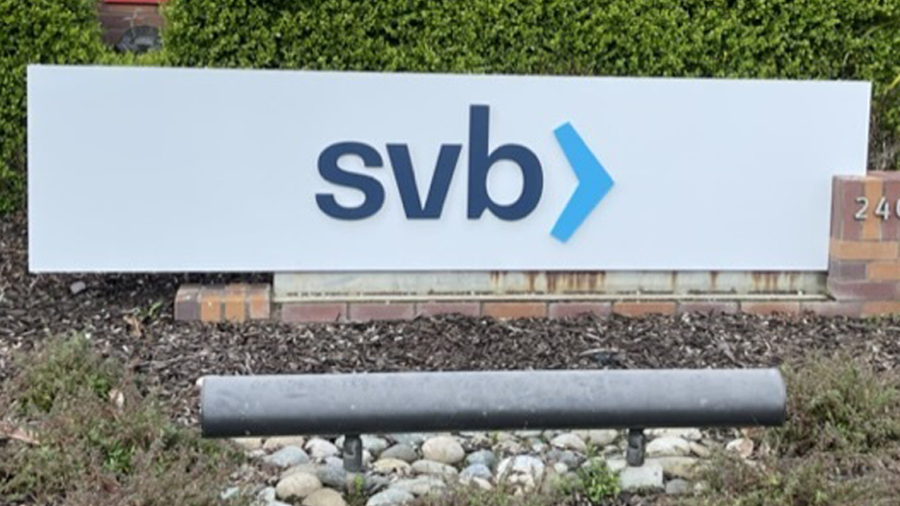The spectacular fall of Silicon Valley Bank was due to the bank management’s inability to manage risk properly and lax Fed supervision and regulation, according to a report by the Federal Reserve Board released Friday.
“Following Silicon Valley Bank’s failure, we must strengthen the Federal Reserve’s supervision and regulation based on what we have learned,” said Vice Chair for Supervision Michael Barr, who led the probe into the failure of the nation’s 17th largest bank.
Search less. Close more.
Grow your revenue with all-in-one prospecting solutions powered by the leader in private-company data.
“This review represents a first step in that process—a self-assessment that takes an unflinching look at the conditions that led to the bank’s failure, including the role of Federal Reserve supervision and regulation,” Barr continued in a release.
The report said the collapse was a “textbook case of mismanagement by the bank” and that when the bank’s board and management realized its risk, it did not take the appropriate steps to fix those problems quickly.
The Federal Reserve Board’s shift in supervisory policy also “impeded effective supervision by reducing standards, increasing complexity, and promoting a less assertive supervisory approach.”
Fed Chairman Jerome Powell said he welcomed the self-critical report on Federal Reserve supervision.
“I agree with and support his recommendations to address our rules and supervisory practices, and I am confident they will lead to a stronger and more resilient banking system,” Powell said.
The report also touched on broader issues exposed in the bank’s failure, including the fact a “combination of social media, a highly networked and concentrated depositor base, and technology” changed the speed of bank runs. The report said “social media enabled depositors to instantly spread concerns about a bank run, and technology enabled immediate withdrawals of funding.”
SVB’s issues also show “systemic consequences through contagion” that can occur regardless of a bank’s size and role in the financial network, the report continued.
A timeline
On March 9, Silicon Valley Bank saw its stock price plunge after announcing it would sell $2.25 billion worth of stock — including $500 million worth of shares to private equity firm General Atlantic — to shore up its balance sheet.
The announcement led to deep concern around the venture world — SVB has relationships with more than 50% of all venture-backed companies in the U.S. and countless VC firms — about the bank’s liquidity and balance sheet strength and led to a run on withdrawals.
The bank unsuccessfully tried to sell itself and was shut down by banking regulators the following morning.
On March 26, the Federal Deposit Insurance Corp. announced First Citizens BancShares had agreed to buy the loans and deposits of the failed Silicon Valley Bank.
SVB’s collapse was due to both bad decisions and bad timing. During the recent venture capital boom, the bank was flush with cash as private companies raised huge sums of fresh capital at sky-high valuations. That cash was stuffed into the bank.
However, as the market has slowed with rising interest rates, that cash has dried up as deposits by startups dipped.
At the same time, SVB had decided to invest in long-term, higher-yield bonds. That decision proved disastrous, as when customers started to withdraw cash, the bank had to sell its $21 billion bond portfolio at a $1.8 billion loss.
The bank had hoped its proposed financing would fill that gap, but instead just spooked many of its customers.
A history
SVB was the dominant bank for tech startups and venture debt in the U.S., cultivating a reputation for close-knit relationships with the power brokers of venture and taking chances on young startups that most banks wouldn’t have the time of day for.
The bank was founded in 1983 by Bill Biggerstaff and Robert Medearis with an eye toward backing VC-backed companies — a still relatively new phenomenon at the time. From there it grew, even surviving the California real estate crash in the early 1990s. It provided banking services for up-and-coming tech companies such as Cisco Systems and Bay Networks.
SVB wasn’t just a bank for VC-backed startups — it was “the” bank for such companies. One of the reasons SVB became the bank of choice was its venture lending practice. The bank had about $74 billion worth of loans on its books, with about 20% of that being from venture debt, according to those in the industry.
SVB also had a large private wealth management division that had significant synergies with its commercial banking operations — helping the same VCs and entrepreneurs with home mortgages and personal loans after it just helped their startup close a big financing round.
The SVB failure is the second-largest bank collapse in U.S. history. The largest collapse of a financial institution was Washington Mutual, which fell in 2008.
Related reading:
- Silicon Valley Bank Stock Plunge Sends Jitters Through The Startup World
- Silicon Valley Bank Fails, Is Taken Over By Banking Regulators
- Silicon Valley Bank Collapse Leaves Tech Industry Scrambling For Answers
- Silicon Valley Bank Bet Big On Biotech. And Now It’s Gone.
- Guaranteeing SVB’s Deposits Was The Right Thing To Do
- SVB Puts Subsidiaries Up For Sale As HSBC Buys UK Unit
- Silicon Valley Bank’s Collapse Will Leave A Big Hole In the Startup World
- SVB Kept Up With Fast-Paced Health Startups. The New Normal May Be Slower
- SVB’s Demise Cools An Already Chilly Climate For Startup Funding
- SVB, Signature Shutdowns Not Chilling Crypto
- In Their Own Words: What Silicon Valley Bank Meant To The Valley
- Regulators Announce Plan To Ensure SVB Depositors
- Silicon Valley Bank’s Collapse Will Leave A Big Hole In The Startup World
- In Their Own Words: What Silicon Valley Bank Meant To The Valley
- First Citizens Buys Silicon Valley Bank’s Deposits And Loans

Stay up to date with recent funding rounds, acquisitions, and more with the Crunchbase Daily.





![Illustration of a unicorn with a green money background. [Dom Guzman]](https://news.crunchbase.com/wp-content/uploads/Unicorn_Money_v1-470x352.jpg)
![Computer generating AI data. [Dom Guzman]](https://news.crunchbase.com/wp-content/uploads/AI-generated-470x352.jpg)
![Illustration of a guy watering plants with a blocked hose - Global [Dom Guzman]](https://news.crunchbase.com/wp-content/uploads/quarterly-global-3-300x168.jpg)
67.1K Followers